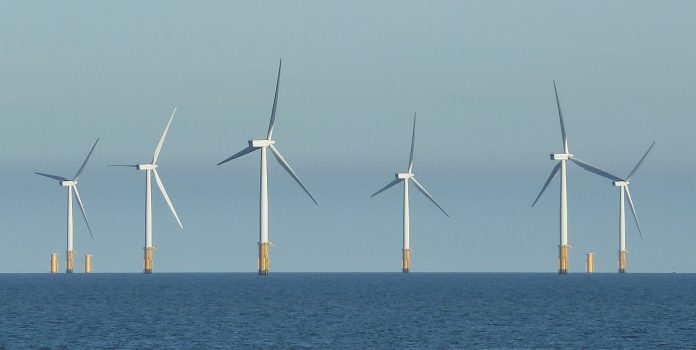In keeping with the Biden administration’s efforts to expand offshore wind energy production along the Atlantic, Pacific, and Gulf Coasts, the Department of Interior’s Bureau of Ocean Energy Management (BOEM) has started the permitting process for the first stage of the proposed Kitty Hawk wind project off the coast of North Carolina.
The Kitty Hawk North project would be located about 27 miles offshore from Corolla, N.C. and would consist of up to 69 large wind turbines in a federal lease area of about 200 square miles.
The developer, Avangrid Renewables, won a lease auction in 2017. The portion of the project currently under consideration for approval, could, upon completion, produce 800 MW of electricity.
As planned, Avangrid’s entire Kitty Hawk wind project could produce up to 2,500 MW of electricity upon completion, enough capacity to power approximately 700,000 homes.
Capacity Versus Production
The first phase of the project, Kitty Hawk North, will connect to Virginia Beach, and would count towards the offshore wind procurement target set by Virginia, and North Carolina’s offshore wind capacity target.
North Carolina has set a goal of 2.8 Gigawatts (GW) offshore wind capacity by 2030 and 8 GW of capacity by 2040.
Capacity targets are not to be confused with production targets, much less actual production, says Craig Rucker, president of the Committee for a Constructive Tomorrow (CFACT), which co-publishes Environment & Climate News.
“Wind and solar projects are all said to have a certain ‘capacity,’ the maximum amount of power they can produce under ideal conditions, but because they are intermittent, their actual production is almost always less than their stated capacity,” Rucker says. “Looking ahead, based on past experience, problems with Kitty Hawk North could arise, if coastal residents object to ocean-based transmission lines being laid through their neighborhoods.”
‘Pump the Brakes’
North Carolina will receive none of the power, but will bear all of the environmental costs arising from Kitty Hawk’s development and operation, says Jon Sanders, a senior fellow in regulatory studies and research at the John Locke Foundation.
“Our marine ecology, environment, and economy, especially our fishing communities, will face an unknown and barely studied amount of disruption,” Sanders said. “At the very least, BOEM should pump the brakes until researchers have had time to study fully the issues at stake.
“In general, any environmental gains are likely to be offset by intermittent wind power’s need to be backed up by a fossil-fuel source when the wind isn’t blowing and turbines aren’t operating, as they have been frequently, including now, at the nation’s first offshore wind power project, Block Island Wind Farm off Rhode Island, which is currently delivering power from old diesel generators,” Sanders said. “Given that the levelized cost of new wind power with backup generation is so high, even higher for offshore wind, the project would necessarily lead to higher costs of electricity to everyone, which would fall especially hard on poor families.”
Bonner R. Cohen, Ph.D. (bcohen@nationalcenter.org) is a senior fellow at the National Center for Public Policy Research and a senior policy analyst with CFACT.


























